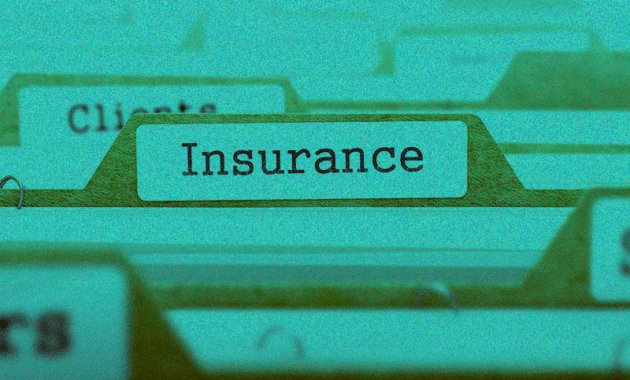Insurance coverage is one of the most important financial protections you can have in today’s unpredictable world. Yet, many policyholders don’t fully understand what their insurance actually covers. Misunderstandings can lead to denied claims, unexpected expenses, or even complete financial ruin in the face of a major loss.
In this article, we’ll uncover the truth about insurance coverage—what’s typically included, what’s often excluded, and how you can ensure your policy truly meets your needs.
What Is Insurance Coverage?

Insurance coverage refers to the specific risks, damages, losses, or services that an insurance policy will pay for. It’s the core of the insurance agreement between the policyholder and the insurer.
The Basic Components of Insurance Coverage
- Coverage Types: Specifies what is protected (e.g., your health, car, home, or life).
- Policy Limits: The maximum amount the insurer will pay.
- Premium: The amount you pay to maintain your policy.
- Deductible: The portion you pay out of pocket before the insurance kicks in.
Common Types of Insurance and Their Coverage
Each type of insurance offers different forms of coverage. Let’s explore them individually.
Health Insurance
Health insurance helps cover medical expenses such as:
- Doctor visits
- Hospital stays
- Prescription drugs
- Preventive care
- Surgeries
However, it may not cover:
- Cosmetic procedures
- Experimental treatments
- Out-of-network services without prior authorization
Auto Insurance
Auto insurance coverage generally includes:
- Liability Coverage: Pays for injuries or property damage you cause to others.
- Collision Coverage: Covers damage to your car in an accident.
- Comprehensive Coverage: Covers non-collision incidents like theft or weather damage.
- Uninsured/Underinsured Motorist: Protects you if the other driver lacks insurance.
Excluded items often include:
- Mechanical breakdowns
- Wear and tear
- Racing-related damage
Homeowners Insurance
Standard homeowners insurance typically includes:
- Damage to your home’s structure
- Personal belongings
- Liability for injuries on your property
- Additional living expenses during repairs
Exclusions often are:
- Flood and earthquake damage (unless you have separate riders)
- Mold or pest infestations
- Negligence-related issues
Life Insurance

Life insurance provides:
- Death benefit payout to beneficiaries
- Optional riders like accidental death, disability waiver, or critical illness
Exclusions might include:
- Suicide (within the first 1–2 years)
- Fraudulent application details
- High-risk activities not disclosed
Travel Insurance
Common coverage includes:
- Trip cancellation or delay
- Emergency medical services
- Lost luggage
Typical exclusions:
- Traveling against government advisories
- Pre-existing conditions (unless declared)
- Adventure sports without coverage riders
What’s Really Included? Understanding Policy Declarations
Policy Declaration Page
The declarations page is a one-stop summary of your insurance contract. It includes:
- Named insured(s)
- Policy number
- Coverage types and limits
- Deductibles
- Effective dates
Reviewing this page is crucial to ensure your expectations match the policy’s reality.
Coverage Descriptions
Each coverage type is detailed further in the policy document. This section outlines:
- Covered incidents
- Definitions (e.g., “accident,” “damage,” or “injury”)
- Claim process instructions
Always read this section thoroughly before signing your policy.
What’s Not Covered: Understanding Exclusions
Common Exclusions Across Insurance Types
- Intentional Acts: Any damage or injury caused deliberately.
- Illegal Activities: Losses related to unlawful acts.
- Unapproved Modifications: Especially in health or auto insurance.
- Neglect or Poor Maintenance: Especially for home or auto insurance.
The Role of Riders and Endorsements
You can often expand your coverage through riders or endorsements. These are policy add-ons that cover excluded events such as:
- Flood or earthquake protection for homeowners
- Critical illness riders for life insurance
- Dental and vision riders for health insurance
How to Make Sure You Have the Right Coverage
Step 1: Evaluate Your Risks
Consider the specific risks in your life. For example:
- Are you in a flood-prone area?
- Do you travel frequently?
- Are you the sole earner in your household?
Step 2: Talk to an Agent or Broker
A licensed professional can help explain:
- Coverage types
- Policy terms
- Optional add-ons
- What coverage is appropriate based on your lifestyle
Step 3: Read the Fine Print
This cannot be overstated. Look for:
- Exclusions and limitations
- Definitions of key terms
- Conditions for claim approval or denial
Step 4: Review Annually
Your coverage needs change as your life evolves. Regularly reviewing your insurance ensures it keeps pace with your circumstances.
Real-Life Examples of Insurance Coverage in Action
Case Study 1: Health Insurance Denial

Lisa had a surgery scheduled but didn’t check if her surgeon was in-network. Her insurer denied most of the claim, leaving her with a $14,000 bill. Always confirm network coverage beforehand.
Case Study 2: Homeowner’s Insurance Surprise
John assumed flood damage was covered. After a major storm, his basement flooded, and he learned he didn’t have flood insurance. His loss wasn’t reimbursed.
Case Study 3: Auto Insurance Payout
Emily was in a minor accident. Her comprehensive and collision coverage helped her repair the car quickly with only a $500 deductible. She was back on the road in a week.
Misconceptions About Insurance Coverage
“Everything Is Covered”
Many people assume insurance is all-inclusive. In reality, every policy has exclusions and limits.
“Lowest Premium = Best Deal”
Cheaper premiums may come with high deductibles or limited coverage. Balance cost with the protection you truly need.
“Claim Filing Is Always Easy”
The claim process can be complex. Provide detailed documentation and understand your policy’s claim guidelines in advance.
Digital Tools and Technology in Insurance
Online Portals and Mobile Apps
Many insurers now offer digital services, allowing you to:
- Check your coverage
- File claims
- Download ID cards
- Make payments
AI and Automation
Artificial intelligence is streamlining underwriting and claims processing, leading to faster responses and more personalized coverage.
Usage-Based Models
Popular in auto insurance, these models monitor real-time behavior (e.g., driving habits) and adjust premiums accordingly.
The Future of Insurance Coverage
Customizable Policies
Insurers are increasingly offering modular plans where you can select the coverage that fits your exact needs.
Subscription Models
Instead of annual commitments, some companies are now offering monthly plans with flexibility to pause or cancel anytime.
Environmental and Cyber Risks
With new risks such as data breaches and climate events, new forms of insurance coverage are evolving to meet these modern threats.
Also Read : Electric Vehicle Insurance: What You Need To Know Before You Buy
Conclusion
Understanding your insurance coverage is not just a legal or financial necessity—it’s a life strategy. Policies are filled with complex terms, but taking the time to dissect your coverage ensures that you’re protected when it matters most. From exclusions and deductibles to endorsements and digital tools, knowing what’s really included in your policy gives you peace of mind and financial confidence.
So, the next time you review your policy, don’t just scan the premium amount—dig into the details. Ask questions, consult professionals, and tailor your plan to your life’s real needs.
Frequently Asked Questions (FAQs)
What is the difference between coverage and policy?
A policy is the entire insurance contract, while coverage refers to the specific protections included within that contract.
Can I customize my insurance coverage?
Yes, many insurers offer customizable plans or riders that allow you to add extra protection for things not included in a base policy.
What does “full coverage” really mean?
“Full coverage” usually refers to a combination of liability, collision, and comprehensive coverage in auto insurance. It doesn’t mean every possible scenario is covered.
How can I check what’s included in my current policy?
Review the declarations page and full policy document. You can also contact your insurance agent or login to your insurer’s website.
Is it worth getting professional help to understand my coverage?
Absolutely. Insurance agents or brokers can help decode complex policies, find gaps in your coverage, and recommend improvements tailored to your needs.




